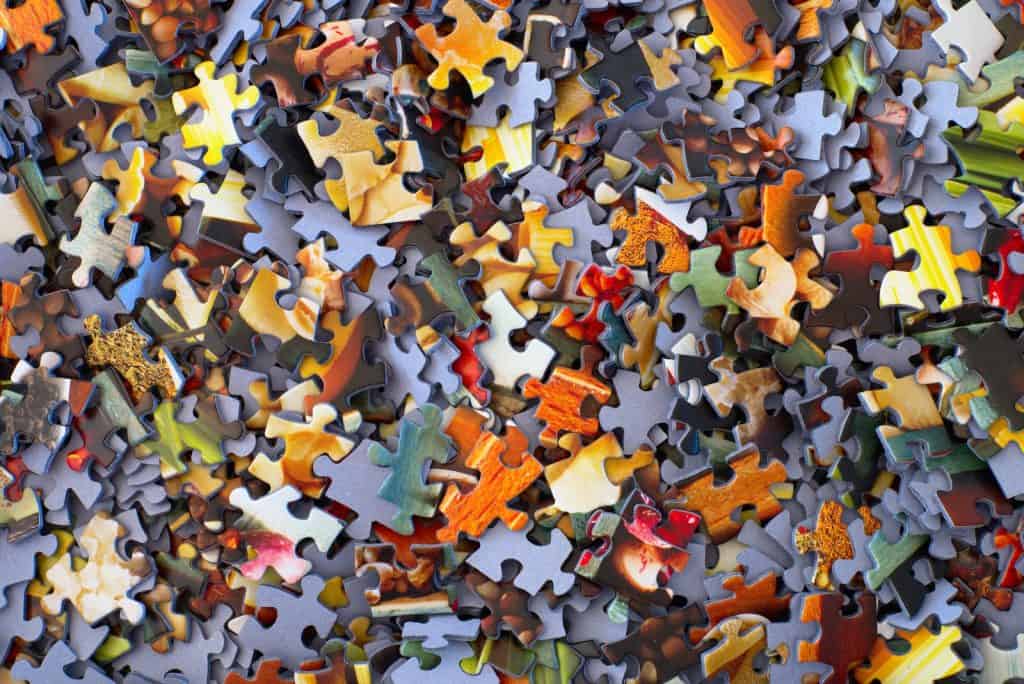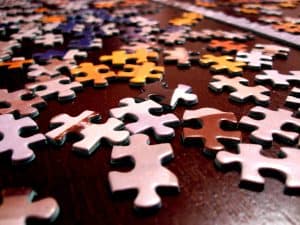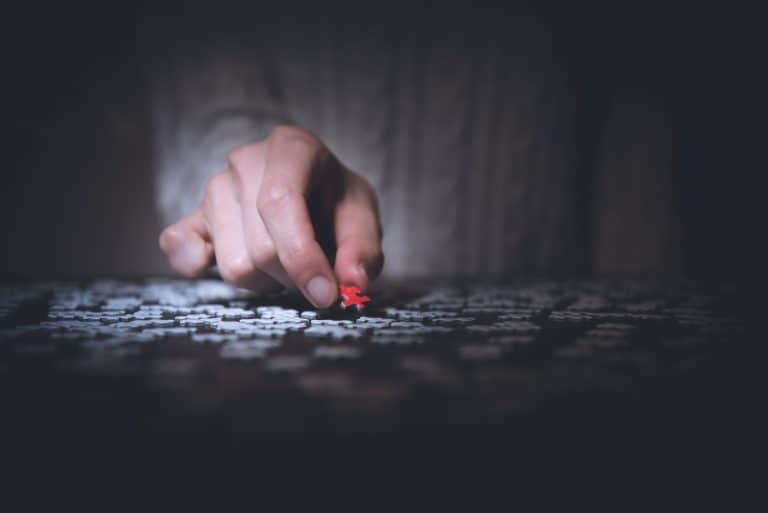Are you an avid jigsaw puzzle enthusiast? Then you’re probably familiar with the terminology used to describe these puzzles. But if you’ve just started piecing together your first jigsaw, then understanding the different terms can be a bit of a challenge.
In this blog post, we will discuss some of the most common jigsaw puzzle terminology and provide helpful tips on how to use them while solving puzzles. We will also go over some basic strategies for completing puzzles quickly and efficiently. So whether you are a novice or experienced puzzler, by the end of this article, you will have all the knowledge needed to master the art of jigsaw-solving!
What is jigsaw puzzle terminology and why it is important to understand?

Jigsaw puzzle terminology is the language used by puzzlers to describe the different parts and pieces of a jigsaw puzzle. Understanding these terms can help you identify which pieces are important for creating the overall picture and will also help you determine how to best arrange the pieces on your puzzle board.
Common Jigsaw Puzzle Terminology
The jigsaw puzzle pieces can be divided into four main categories: edge pieces, interlocking pieces, border pieces, and corner pieces.
Edge Piece:
Edge piece is an important term used to describe the border pieces of a jigsaw puzzle. These are usually straight-edged pieces that fit together along the outer edges of the puzzle and help define its shape. A Jigsaw puzzle piece usually has a small tab or notch on one side that fits into the slot of an adjoining piece when connecting both sides together.
Interlocking Piece:
Interlocking piece is another important term referring to pieces that fit together with other individual pieces in order to form shapes or patterns. These pieces often have no straight edges and must be combined with other pieces in order to form the overall picture.
Corner Piece:
Corner piece is a term used to describe the pieces that fit together along the corners of the jigsaw puzzle. These are usually curved pieces that fit into one another when connecting both sides.
Border Piece:
Border piece is a term used to describe the individual pieces that make up the frame of a puzzle. These are usually darkly colored and help add definition to the outer edges of your puzzle.
Other jigsaw puzzle terminolgies
Image area- These are the areas of a jigsaw puzzle that contain images or patterns.
Puzzle grid- This term describes the overall pattern of pieces in a jigsaw puzzle.
Gap filler pieces- These are pieces used to fill in any gaps between two adjacent pieces that don’t fit together perfectly.
Puzzle Dust – small pieces of cardboard or paper that can break off the puzzle during assembly.
Sort – the process of grouping puzzle pieces by color, pattern, or shape to make assembly easier.
Tableau – the area where the puzzle is assembled.
Jigsaw puzzlers use these terms to quickly identify and place the right pieces in their proper positions on the tableau. So if you’re looking to become a master jigsaw-solver, understanding the terminology is an essential part of your journey.
Tips for Using Jigsaw Puzzle Terminology

Now that you know some of the most common terms used to describe jigsaw puzzles, here are a few tips on how to use them while solving your puzzles:
– Start with the edge pieces: This will help give you an idea of the overall shape and size of the puzzle.
– Look for patterns: Many jigsaw puzzles have unique patterns that can be used to identify key pieces. Repeating patterns and unique shapes can help you identify certain pieces faster.
– Pay attention to colors: Looking for certain shades or gradients of color can help you find specific picture pieces faster.
– Use a strategy: Having an efficient strategy when tackling a jigsaw puzzle can help you complete it faster and with fewer mistakes.
Different types of puzzles and Strategies
Jigsaw puzzles come in a variety of different shapes, sizes, and levels of difficulty. And while the terminology used to describe them may remain the same, it is important to keep in mind that the strategy you use to complete each type will vary. Here are some common types of puzzles and tips on how to solve them:
Traditional Puzzles:
Traditional puzzles are the most common type of jigsaw puzzle and often feature images of landscapes, animals, or other nature scenes. When solving these puzzles, it is best to start by assembling the edge pieces first and then work your way inward to complete the center picture.
Wooden Puzzles:
Wooden jigsaw puzzles are often more difficult to solve than traditional puzzles, as they are made with thicker and larger pieces. To complete these puzzles successfully, it is important to look for unique shapes, colors, or patterns in the picture pieces that will help you identify them.
3D Puzzles:
These types of puzzles feature a model of an object that must be assembled from pieces that fit together to create a three-dimensional shape. To solve these puzzles, it is important to take your time and look for clues such as curved edges or connecting points that will help you determine which pieces should be used.
Basic strategies for solving puzzles quickly and efficiently
No matter what type of jigsaw puzzle you are tackling, there are a few basic strategies that can help you complete it faster and with fewer mistakes.
– Sort your pieces: Separating the edge pieces from the picture pieces can save you time when assembling your puzzle.
– Work in an orderly fashion: Starting at one corner and working in a systematic pattern can help keep you organized and prevent wasted effort.
– Look for patterns or colors: Identifying repeating features such as shapes, lines, and colors will help you find pieces faster.
– Take breaks: Taking a break from time to time can help refresh your eyes and mind so that you can focus better.
Helpful tips on how to use jigsaw puzzle terminology while solving puzzles
By becoming familiar with the terminology used to describe jigsaw puzzles, you will become better at solving them. Here are some helpful tips on how to use this language while working on your puzzles:
– Start with edge pieces: This will give you an idea of the overall shape and size of the puzzle.
– Look for patterns: Many jigsaw puzzles have unique patterns that can be used to identify key pieces.
– Pay attention to colors: Looking for certain shades or gradients of color can help you find specific picture pieces faster.
– Use a strategy: Having an efficient strategy when tackling a jigsaw puzzle can help you complete it faster and with fewer mistakes.
What you can do to a finished puzzle?
Once you have completed a jigsaw puzzle, there are several things that you can do to preserve and display it. Here are some of the most popular options:
– Frame it: Framing your finished jigsaw puzzle is a great way to show off your work and keep it protected from damage.
– Make a collage: Create a unique piece of art by displaying your puzzle along with other items such as photographs or cards.
– Take pictures: Capture the beauty of your completed puzzle by taking pictures and saving them in an album or online.
– Gift it: Give your finished jigsaw puzzle to a friend or family member who enjoys puzzles as a special gift.
– Donate it: Consider donating your completed jigsaw puzzle to a charity or organization in need.
Conclusion
Jigsaw puzzle terminology can be helpful when attempting to solve a puzzle. By understanding the language of jigsaw puzzles, it is possible to complete them faster and with fewer mistakes. After completing your jigsaw puzzle, there are several things you can do to preserve and display it. With some practice and patience, anyone can enjoy the rewarding challenge of solving a jigsaw puzzle!
For more articles:

